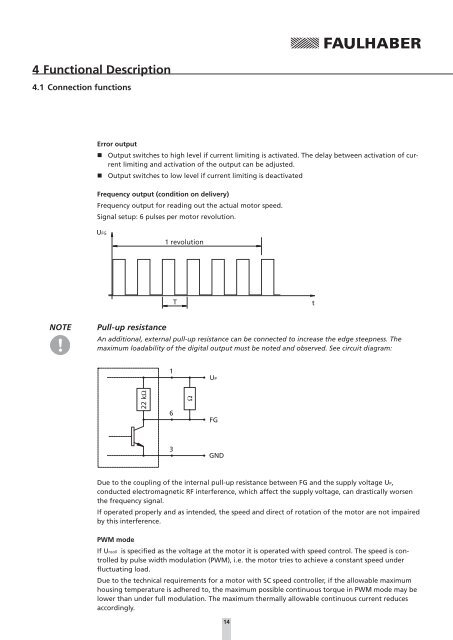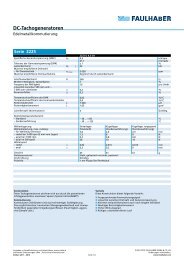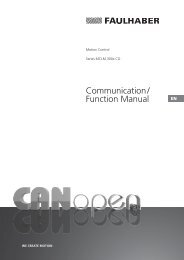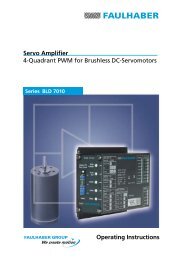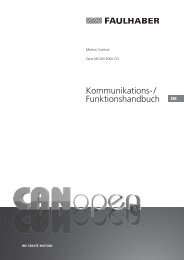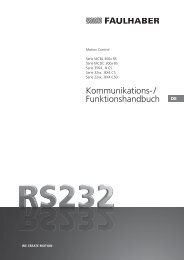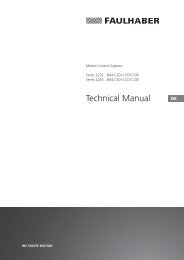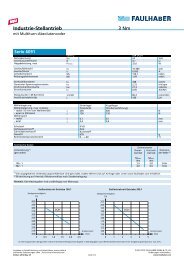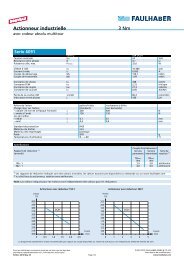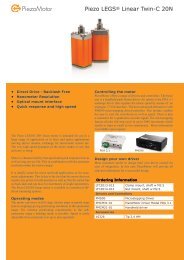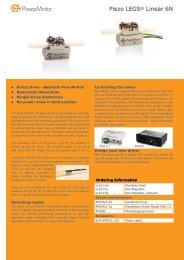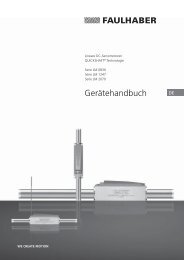Instruction Manual - Dr. Fritz Faulhaber GmbH & Co. KG
Instruction Manual - Dr. Fritz Faulhaber GmbH & Co. KG
Instruction Manual - Dr. Fritz Faulhaber GmbH & Co. KG
Create successful ePaper yourself
Turn your PDF publications into a flip-book with our unique Google optimized e-Paper software.
4 Functional Description<br />
4.1 <strong>Co</strong>nnection functions<br />
Error output<br />
• Output switches to high level if current limiting is activated. The delay between activation of current<br />
limiting and activation of the output can be adjusted.<br />
• Output switches to low level if current limiting is deactivated<br />
Frequency output (condition on delivery)<br />
Frequency output for reading out the actual motor speed.<br />
Signal setup: 6 pulses per motor revolution.<br />
1 revolution<br />
NOTE<br />
Pull-up resistance<br />
An additional, external pull-up resistance can be connected to increase the edge steepness. The<br />
maximum loadability of the digital output must be noted and observed. See circuit diagram:<br />
1<br />
UP<br />
22 kΩ<br />
6<br />
Ω<br />
FG<br />
3<br />
GND<br />
Due to the coupling of the internal pull-up resistance between FG and the supply voltage UP,<br />
conducted electromagnetic RF interference, which affect the supply voltage, can drastically worsen<br />
the frequency signal.<br />
If operated properly and as intended, the speed and direct of rotation of the motor are not impaired<br />
by this interference.<br />
PWM mode<br />
If Unsoll is specified as the voltage at the motor it is operated with speed control. The speed is controlled<br />
by pulse width modulation (PWM), i.e. the motor tries to achieve a constant speed under<br />
fluctuating load.<br />
Due to the technical requirements for a motor with SC speed controller, if the allowable maximum<br />
housing temperature is adhered to, the maximum possible continuous torque in PWM mode may be<br />
lower than under full modulation. The maximum thermally allowable continuous current reduces<br />
accordingly.<br />
14


